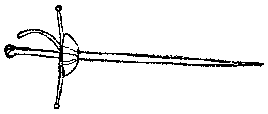|
This project is a Sporting Crossbow. The design most resembles a 16th century Spanish bow.
HISTORY
The first true crossbow was the Roman manubalista. Exact details of early crossbows are sketchy at best, it's not until the 10 th to 13th century when we get truly accurate details. With increased use of the long bow in the 14th century the crossbow might have disappeared if not for the ease of use by soldiers with limited training. The development of various cocking tools allowed an increase in draw weight and greater efficiency. By the end of the 16th century the firearm had all but replaced the crossbow in the military. The sporting crossbow however was used well into the 18th century.
CONSTRUCTION
Being made for hunting and not subject to extreme use, the design for this crossbow was more elaborate than my war bows. The basic pattern for this crossbow came from The Book of the Crossbow. The basic stock is made out of a piece of black walnut laminated between two pieces of maple. I used a steel prod rated at 150 lbs. Steel prods came into use in the 14th century and so go well with this bow. A period roller-lock mechanism would be made out of horn, wood or metal, but for safety and practical reasons I used Delrin (a tough plastic). I did get a little creative on the trigger handle and added some twists and a curlicue to the end. For the finish I used a hand-rubbed wax. To hold the prod onto the stock I used flax, other period materials would be rawhide, sinew or metal irons.
BIBLIOGRAPHY
Iolo's First Book of Crossbows: Watson, David R: Gwasg Caseg Wen Press Austin Texas
The Book of the Crossbow: Ralph Payne-Gallwey: Dover Publication Inc. New York
European Crossbows: Josef Alm: Henry Ling Ltd. Dorchester Dorset
Traditional Archery: Sam Fadala: Stackpole Books Mechanicsburg PA
The Medieval Archer: Jim Bradbury Barnes & Noble Inc.
|

